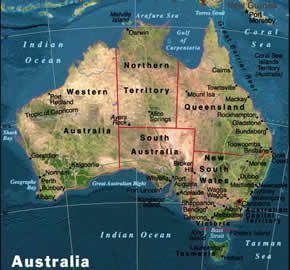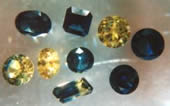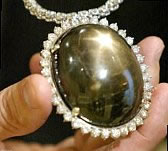Mining Sapphire in Australia
Overview of Australian Sapphire Mining
Australia stands tall as one of the world’s top producers of sapphires, renowned for their quality and vibrant variety. From deep blues to vivid greens and even rare multi-colored gems, Australian sapphires are a treasure worth exploring. The industry, deeply rooted in regions like New South Wales and Queensland, has been sparkling for over a century. Curious about owning a piece of this brilliance? Learn more about sapphire gemstones and their unique properties.
Key Sapphire Mining Regions
Sapphire mining thrives in specific Australian locales, with Queensland’s Anakie and Lava Plains placer deposits and the New England area of New South Wales leading the charge. Queensland, in particular, is a hotspot, with its Anakie field producing not just sapphires but also gem-quality zircon and, occasionally, diamonds. These regions yield sapphires in a stunning array of colors - blue, green, yellow, gold, orange, pink, mauve, purple, and even spectacular multi-colored gems. Want to explore other global sapphire sources? Check out where sapphires are found here.

Mining Methods in Sapphire Fields
Sapphires in Australia, born of volcanic origin, are found in alluvial deposits up to 20 meters below the surface. Mining methods vary based on depth and surrounding material. For shallow deposits, simple hand mining with shovels or jackhammers does the trick. Deeper deposits require digging shafts, while large-scale operations use heavy earth-moving equipment for open-cut mining. It’s a hands-on process, and the method depends on the ground you’re working with. Curious about other famous sapphire regions? Discover the allure of Kashmir sapphires or Sri Lankan sapphires.
Processing Sapphires: From Dirt to Gem
Once mined, the sapphire-bearing material, or "wash," undergoes processing to extract the gems. For small-scale operations, hand sieving and cleaning might suffice. Larger setups use mechanized systems. In a typical shaft mine, miners loosen material with jackhammers, haul it up via a motorized winch (affectionately called the “up and over”), and feed it into processing equipment. A conveyor belt moves the wash into a rotating trommel, which sorts out fine sand and oversized rocks. The medium-sized material then hits a pulsater, where heavy sapphires settle while lighter rocks are washed away. At day’s end, the “sapphire trap” is sorted to uncover the best stones for faceting. For insights into other sapphire-rich regions, explore Pailin blue sapphires.

A Glittering History: The Black Star of Queensland
One of Australia’s most iconic sapphires is the 733-carat Black Star of Queensland, discovered in 1935 by 14-year-old Roy Spencer on Klondyke Ridge. Legend has it, Roy’s father, Harry, used this massive gem as a doorstop for years before its true value was recognized! This star sapphire remains a testament to the hidden treasures lurking in Queensland’s fields. Want to learn more about star sapphires? Dive into the world of Golden Triangle sapphires.

Frequently Asked Questions
What makes Australian sapphires unique?
Australian sapphires are prized for their diverse colorsjoon and high quality. They come in a wide range of colors, including rare multi-colored varieties, and are found in alluvial deposits across regions like Queensland and New South Wales.
Where are sapphires mined in Australia?
The primary sapphire mining regions are Queensland’s Anakie and Lava Plains placer deposits and the New England area of New South Wales, known for their rich corundum deposits.
How are sapphires mined in Australia?
Mining methods vary from hand mining for shallow deposits to shaft mining and large-scale open-cut operations using heavy equipment, depending on the depth and type of deposit.
What is the Black Star of Queensland?
The Black Star of Queensland is a famous 733-carat star sapphire found in 1935 by a young boy in Queensland. It’s one of the most iconic Australian sapphires, once famously used as a doorstop.
Can I buy Australian sapphires?
Absolutely! You can explore a variety of loose Australian sapphires and star sapphires available for purchase.

